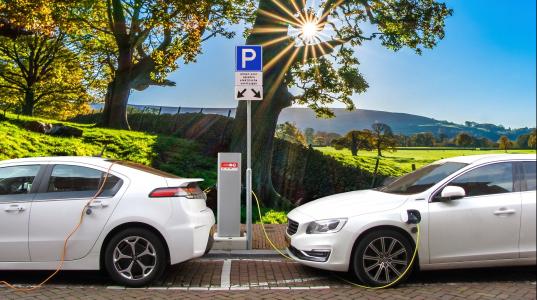
England has an air pollution crisis on its hands – and the country needs to step away from fossil fuels and toward cleaner transport as soon as possible to protect people's health.
The expansion of the electric vehicle (EV) market has a critical role to play in this transition, but many existing barriers prevent people from buying and taking advantage of EV benefits, particularly those on lower incomes. Our new report finds that targeted Government action to make EVs more accessible could help lower-income households save millions of pounds each year. A report from our partners at Green Alliance complements these findings, with analysis that shows cost savings would reach £3,000-£5,000 per household over the time of owning a car.
Equity lens
The inherent tension between needing to electrify vehicles as soon as possible and breaking down existing barriers begs the question: How can the UK bridge the gap between the affordability of cleaner EVs and internal combustion engine (ICE) vehicles?
Environmental Defense Fund Europe (EDFE) and Frontier Economics sought to answer this question in a collaborative report that examines how to equitably transition away from fossil fuel vehicles to EVs. Specifically, we looked at how this progression could incorporate all residents of the UK, especially lower-income individuals – who are simultaneously more likely to be harmed by transportation pollution while being least able to afford a clean alternative.
EV cost barriers
Although the Government recognises the need to electrify transport, there is a lot of work still to be done: the number of zero or near-zero emission vehicles on the road in the UK is less than 1 in 200 or 0.6% of total vehicles.
Existing market conditions and financing options remain strongly in favour of ICE vehicles, which is slowing EV sales and preventing low- and middle-income people from entering the market.
Several factors result in wealthy people buying EVs at higher rates than people on lower incomes, including:
- EV depreciation: EVs’ future resale value is far less favourable than conventional cars’, largely because those who determine second-hand values have much less data for EVs. As a result, between 2015 and 2018, the majority of EV models were worth less than half of their upfront price.
- Underdeveloped second-hand market: Lower-income households are more likely to purchase used vehicles, but less than 3% of those on the market are ultra-low emission vehicles. Moreover, mostly due to a lack of familiarity, second-hand car dealers are not properly equipped to sell EVs.
- Lack of attractive financing options: For example, except for one cleaner vehicle, the list of cars that have an attractive interest rate attached are ICE vehicles.
Policy recommendations
Thoughtful, targeted policies can reduce barriers to EV adoption, and help people on lower incomes save money on motoring. For example, the analysis found that if policies result in half of new car sales shifting to electric across all income levels, low- to middle-income households would save roughly £350 million in total every year in fuel and maintenance costs.
We have three recommendations for how the incoming Government can make EVs more affordable and accessible:
- Continue to reduce the upfront cost of EVs: Follow the example of rebate and loan programmes in California and Scotland, respectively − as well as continue to run plug-in grants and homecharge schemes in the UK, with a particular focus on lower-income households.
- Establish better financing options for EVs: Put in place robust policies to enhance financing options for and resale value of EVs, such as continuing to reduce emission standards for vehicles and establishing sales mandates.
- Ensure better dissemination of information: Strengthen programmes run by the Office of Low Emission Vehicles to certify car dealerships that have the demonstrated knowledge necessary to sell EVs.
Models of success
There are two jurisdictional examples that can be seen as potential models for the UK: Scotland and the State of California.
- Scotland rolled out an interest-free EV loan programme that offers up to £35,000 for a new fully electric or plug-in hybrid vehicle.
- California introduced a rebate programme for cleaner vehicles to defray their higher upfront cost, with a special focus on helping people on lower incomes. When purchasing a clean vehicle, people and businesses can receive a point-of-sale rebate – between $1,500 and $5,000, with a $2,000 “add-on” for low-income customers.
Both programmes have seen substantial success, and can be adapted to maximise EV growth in the UK.
The UK needs to phase out fossil fuel-powered vehicles as soon as possible. Targeted policies would help ensure lower- and middle-income families can harness important benefits and cost savings from electric transport.
You can find the full EDFE report here and fact sheet here, and Green Alliance report here.